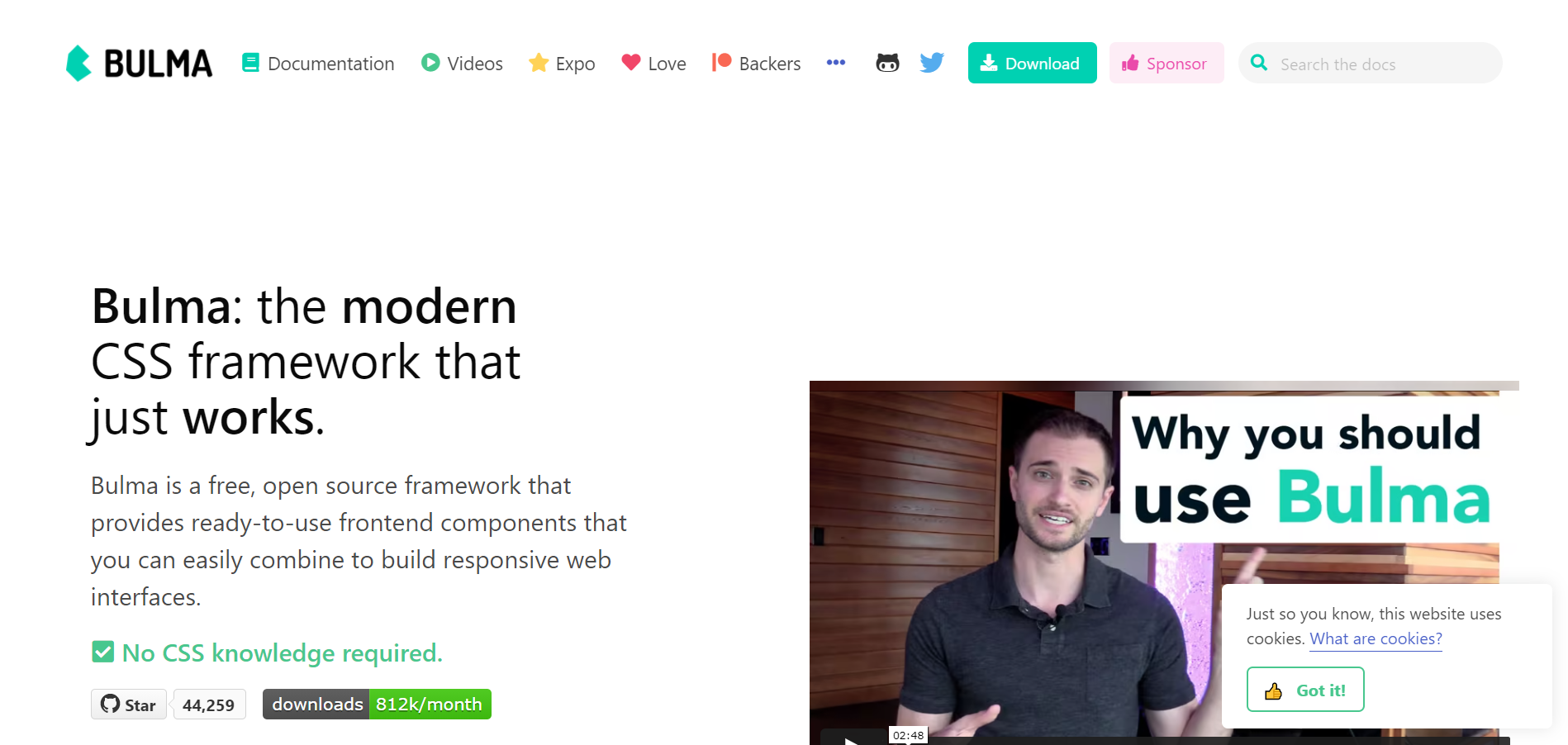Responsive CSS frameworks take a lot of work and persistence to build and create when building CSS on HTML responsiveness, accessibility, and structure. This is why CSS frameworks were created, to take the stress off of you!
A CSS framework is a software framework created to allow for easier, more standards-compliant web design using HTML/CSS. Many popular CSS frameworks are design-oriented and contain elements that can be re-used in the creation of any website or app, as well as a grid system designed to provide a responsive CSS layout to webpages.
All the frameworks listed in this article are free and open source.
1. Bootstrap
Without a doubt, Bootstrap is the most widely used free and open source CSS framework. Created in 2011 by developers Mark Otto and Jacob Thornton, Bootstrap is now used by millions of websites.
 Bootstrap features Sass variables and mixins, a responsive grid system, extensive prebuilt components for building layouts, and powerful plugins built on jQuery.
Bootstrap features Sass variables and mixins, a responsive grid system, extensive prebuilt components for building layouts, and powerful plugins built on jQuery.
2. Tailwind
Tailwind is a relatively new CSS framework, designed to be different from its competitors. Instead of predesigned components, Tailwind provides low-level utility classes that let you build your own designs. I personally have used Tailwind in my projects and loved it so far.
 Let’s have a quick look to some HTML used with Tailwind:
Let’s have a quick look to some HTML used with Tailwind:
<button class="bg-blue hover:bg-blue-dark text-white font-bold py-2 px-4 rounded">
Button
</button>
As you can see, the example is using many utility classes on a button element. Those classes allow you to finely style any element: We can easily spot classes named text-white, font-bold and rounded, defining the visual aspect of the button.
3. Bulma
With 21kB minified and gzipped, Bulma isn’t the most lightweight of this list, but this open source CSS framework is so interesting that it totally deserves a mention. Bulma is built with a mobile-first approach, which makes every element optimized for vertical reading, and its grid system is fully built with Flexbox.
 Achieving flexible layout with same-size columns is as simple as adding a .column class to any of your HTML elements.
Achieving flexible layout with same-size columns is as simple as adding a .column class to any of your HTML elements.
Bulma is also built with Sass, which allows you to only use the features you really need in your web development tasks.
4. UI Kit
UIkit is a lightweight and responsive CSS framework for developing fast and powerful web interfaces.
 Consisting of compiled CSS and JavaScript, UIKit is easy to use and provides all the needed tools for modern web design: Grid, custom icons, components, animations, and a lot more. UIKit is compatible with Less and Sass.
Consisting of compiled CSS and JavaScript, UIKit is easy to use and provides all the needed tools for modern web design: Grid, custom icons, components, animations, and a lot more. UIKit is compatible with Less and Sass.
5. Semantic UI
This framework stands out in many ways. It has become popular over a short period of time because of its simplicity. Semantic UI is well customized and IT doesn’t take much to comprehend. It is also easy to learn. This framework is lightweight and beginner-friendly

6. Spectre
A lightweight (~10KB gzipped) starting point for your projects, Spectre provides elegantly designed elements, as well as a flexbox-based, responsive and mobile-friendly layout.
 Much smaller in size and features than fully-featured frameworks like Bootstrap, Spectre is a great choice for single-page websites and small web applications
Much smaller in size and features than fully-featured frameworks like Bootstrap, Spectre is a great choice for single-page websites and small web applications
Conclusion
All CSS frameworks bring different benefits and are useful in all projects as far development of the web is concerned and it requires CSS frameworks.it is advisable to select any CSS framework of your choice that can help you in your project considering your skill level and requirement of the project you are doing. This list contains all the frameworks I have used personally. If I have missed out on some great picks, feel free to comment to let everyone and me know about it.

